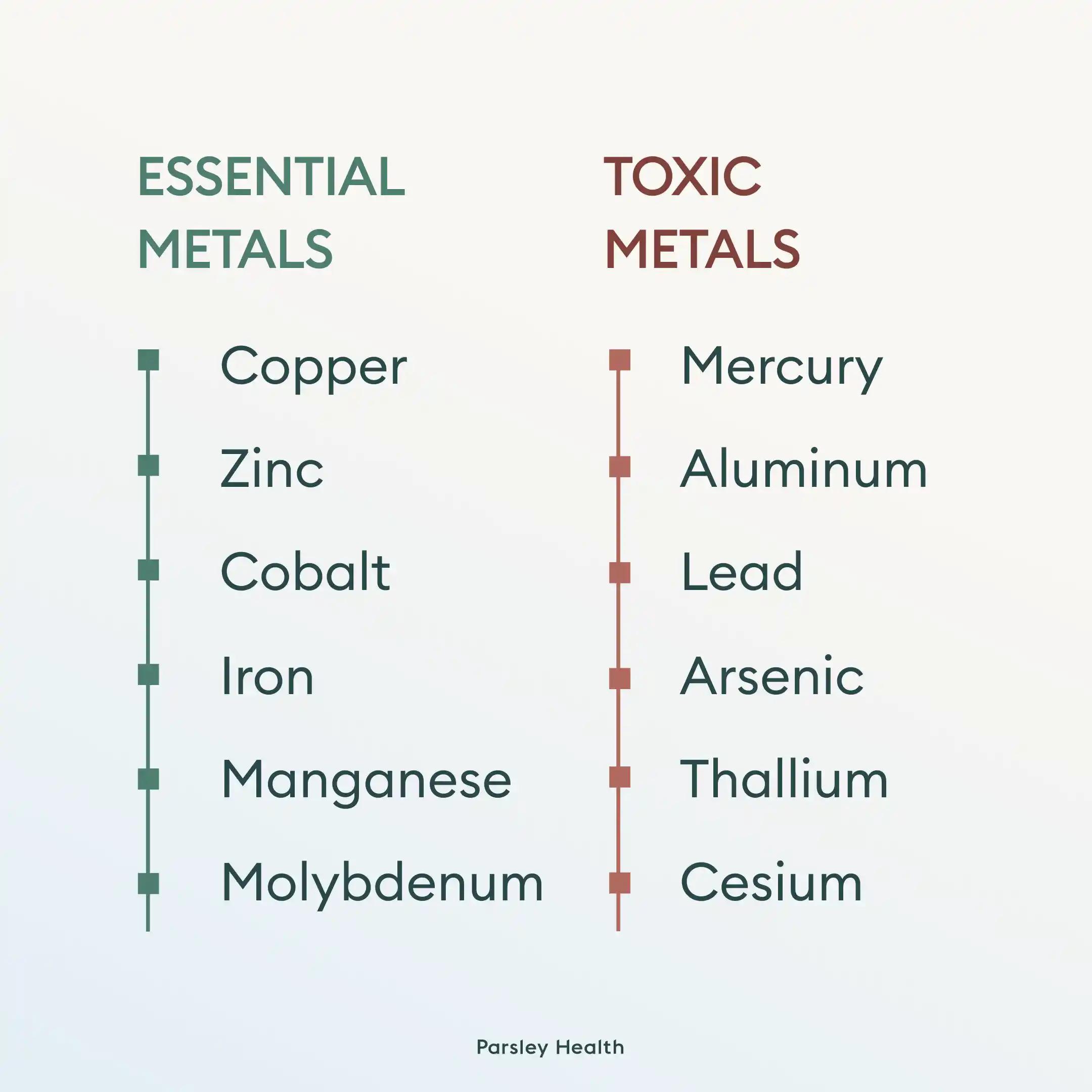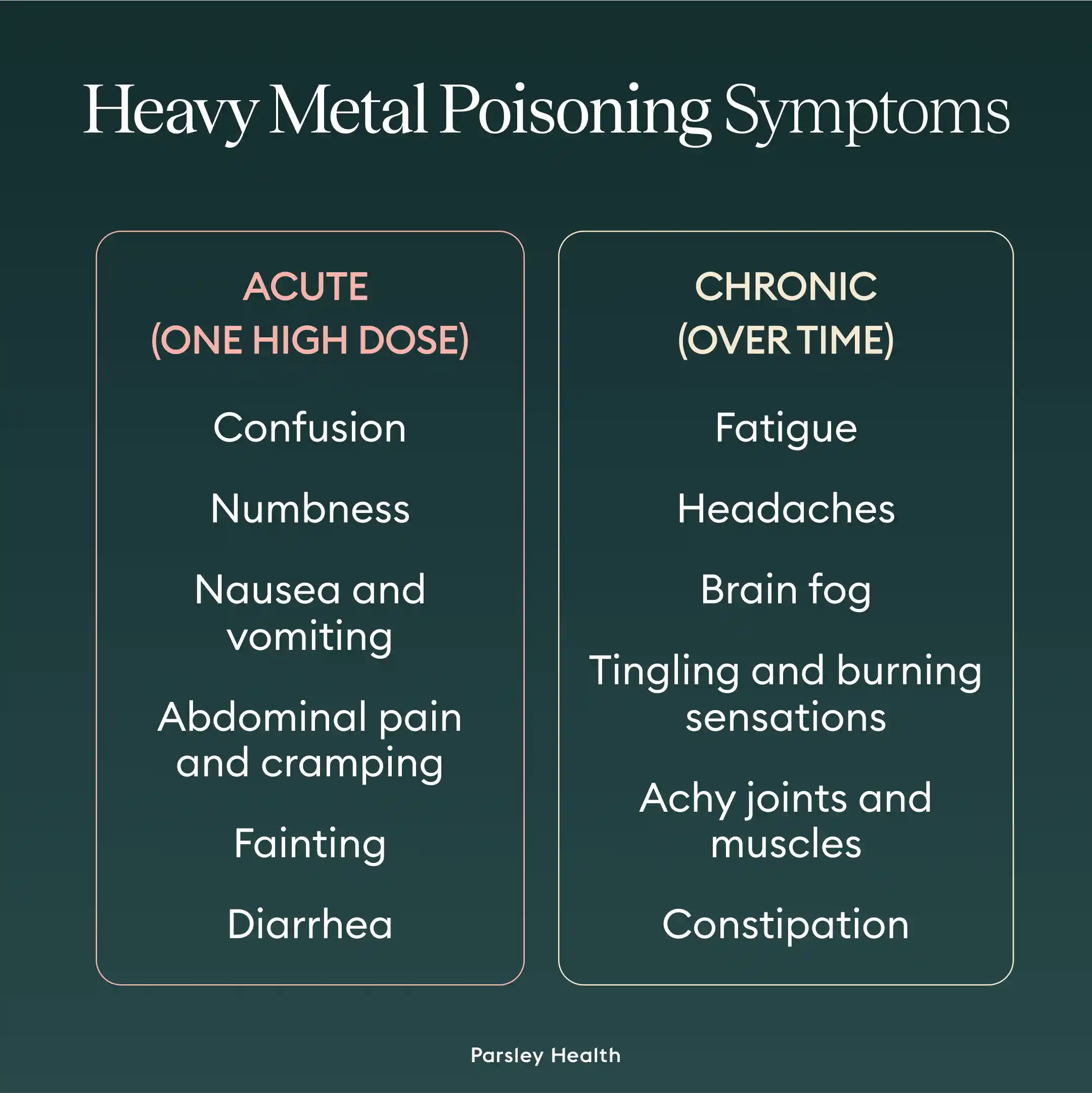This article contains additional reporting by Jennifer Chesak.
Heavy metals are in our food, beauty products and even teeth fillings, but many of us know little about them. You may be wondering if you have heavy metal toxicity, if you need to detox, and what heavy metal detox side effects might be.
Extremely high levels of exposure to heavy metals can be dangerous. But you likely won’t experience heavy metal poisoning, since it's considered rare in the United States.
We’ve laid out the top four things you should know about heavy metals, where they’re coming from, and how you can undergo a heavy metal detox if needed.
What are heavy metals?
These are the top four things you need to know about heavy metals.
Metals are natural
Metals are naturally present in soil because they are part of the earth’s crust. A heavy metal is defined as an element with a specific gravity that is at least five times that of water.
Metals are essential
About 20 metals are essential to the body. They are responsible for important bodily processes. These include six transitional elements that are in the "d-block" of the periodic table.
- Copper
- Zinc
- Cobalt
- Iron
- Manganese
- Molybdenum
Some metals are dangerous
High levels of mercury, lead, arsenic, thallium, and other heavy metals can cause symptoms as varied as nerve damage, pain, nausea, vomiting, headaches, fatigue, thyroid dysfunction, kidney disease and cancer.

Each metal can cause unique symptoms if accumulated to toxic levels.
Heavy metal poisoning or toxicity is rare
Usually significant exposure is required for severe symptoms to show up. Heavy metal poisoning is relatively rare in the United States.
However, low-grade chronic exposure from things like poor diet, toxic environments, and more can still lead to a buildup of low to moderate levels of metals in the body.
This heavy metal accumulation, while not classified as an actual toxicity, can cause immune dysfunction, hormone imbalance, fatigue, brain fog, and even high blood pressure in the case of lead.
Many doctors don’t normally test for heavy metals in the blood because they may not recognize the hallmark symptoms. Plus, the symptoms can sometimes be confused for other conditions.
At Parsley Health, we regularly test for heavy metals to make sure you’re in the clear. If we find that you have high levels of heavy metals, we’ll walk you through the steps of a heavy metal detox and continue testing your levels until they’re back to a lower range.








